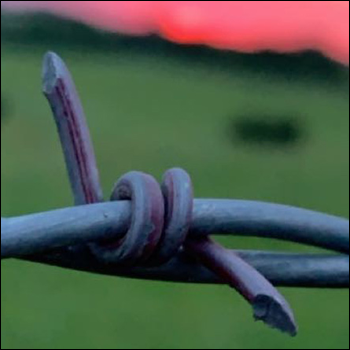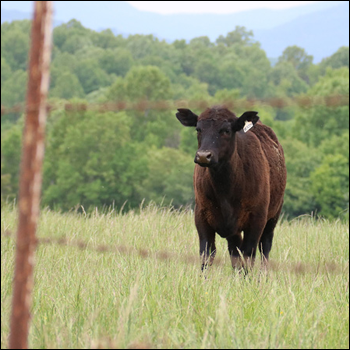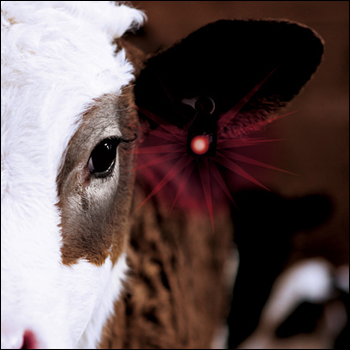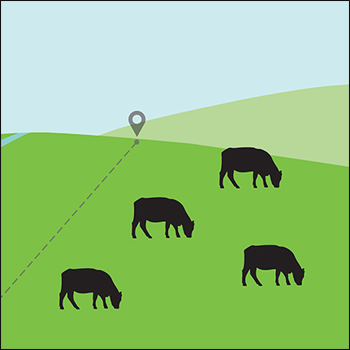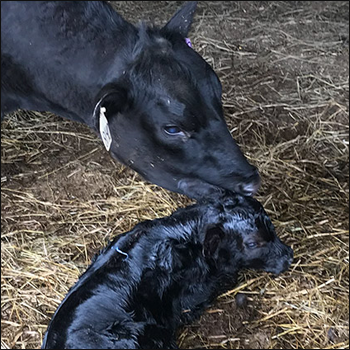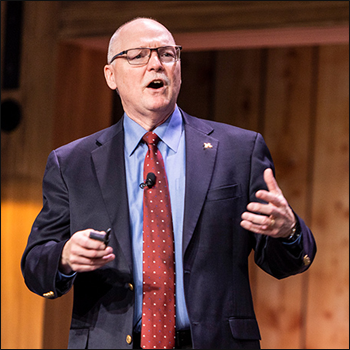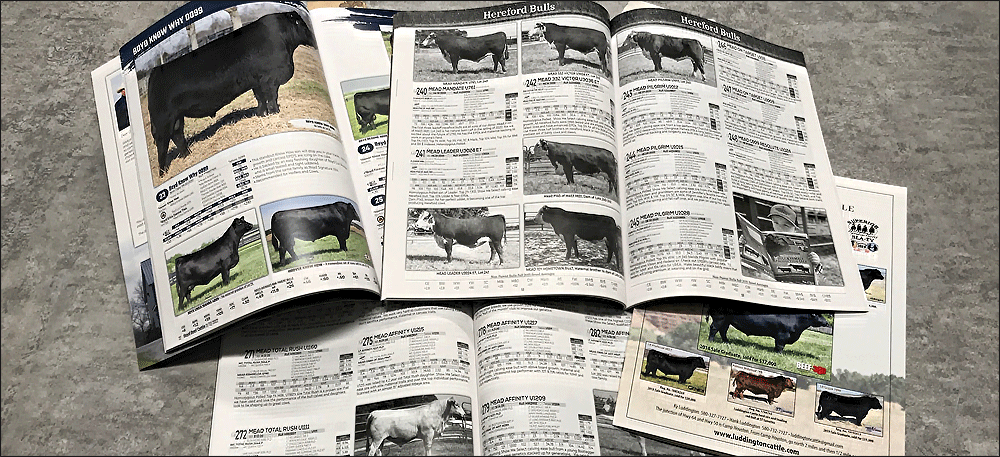
A Means of Comparison
USMARC releases across-breed adjustment factors, providing means to compare EPDs of one breed to another.
The U.S. Meat Animal Research Center (USMARC) recently released its across-breed expected progeny difference (AB-EPD) adjustment factors for 2022. Breeds generally establish genetic predictions for progeny performance, published as EPDs, through a national cattle evaluation (NCE) within the breed. However, the resulting EPDs are generally only comparable within breed because of differences in the genetic base.
Since 1993, the USMARC has produced a table of factors to adjust the within-breed EPD values published by the various breed associations so that the merit of individuals can be compared across breeds. Adjustment factors for carcass traits have been calculated since 2009, and carcass weight was added in 2015. To be included, breeds must have carcass data in the USMARC database and report their carcass EPDs on an actual carcass basis using an age-adjusted end point.
Bulls of different breeds can be compared on the same EPD scale by adding the appropriate adjustment factor to the EPDs produced in the most recent genetic evaluations for each of the 18 breeds.
Normally, the EPDs of animals from different breeds cannot be compared because many breed associations compute their EPDs in separate analyses, and each breed has a different base point. The across-breed adjustment factors allow producers to compare the EPDs for animals from different breeds for these traits; these factors reflect both the current breed difference (for animals born in 2020) and differences in the breed base point.
The AB-EPDs are most useful to commercial producers purchasing bulls of more than one breed to use in crossbreeding programs. For example, in terminal-cross breeding systems, AB-EPDs can identify bulls in different breeds with high growth potential or favorable carcass characteristics.
The factors are derived by estimating breed differences from the USMARC germplasm evaluation program and adjusting these differences for the EPDs of the sires that were sampled in the system. The traits for which factors are estimated are birth weight (BW), weaning weight (WW), yearling weight (YW), maternal weaning weight (Milk), marbling score (Marb), ribeye area (REA), backfat depth (Fat), and carcass weight (CW) (see Table 1). These factors adjust the EPDs to an Angus base.
As an example, suppose a Red Angus bull has a yearling weight EPD of +90.0 pounds (lb.) and a Hereford bull has a yearling weight EPD of +92.0 lb. The across-breed adjustment factors for yearling weight (see Table 1) are -28.5 for Red Angus and -41.8 lb for Hereford. The AB-EPD is 90.0 + (-28.5) = 61.5 for the Red Angus bull and 92.0 + (-41.8) = 50.2 for the Hereford bull. The expected weaning weight difference of offspring when both are mated to cows of another breed (e.g., Braunvieh) would be 61.5 lb. – 50.2 lb. = 11.3 lb. This Red Angus sire would be expected to sire calves that, on average, weigh 11.3 lb. more than the calves out of this Hereford sire.
Brahman EPDs for marbling score are reported on a different scale than the other breeds with marbling score EPDs. For Brahman 400 = Sl00 and 500 = Sm00; whereas, for the other breeds, 4.00 = Sl00 and 5.00 = Sm00, meaning the Brahman EPDs are reported on a scale that is 100 times greater. As a result, EPDs from other breeds need to be multiplied by 100 after being adjusted to Brahman, and Brahman EPDs need to be divided by 100 prior to applying the adjustment factors.
For instance, to adjust a Simmental bull with a marbling score EPD of 0.15 to compare to Brahman bulls, using the factors from Table 1, add the Simmental factor, subtract the Brahman factor, and then multiply by 100, so [0.15 + (-0.15) – (-0.68)] * 100 = 68.
Similarly, to adjust a Brahman bull with a marbling score EPD of 40 to compare to Simmental bulls using the same factors, first divide by 100, then add the Brahman factor and subtract the Simmental factor: (40 ÷ 100) + (-0.68) – (-0.15) = -0.13.
It is important to note that the factors in Table 1 do not represent a direct comparison among the different breeds because of base differences between the breeds. They should only be used to compare the EPDs (AB-EPDs) of animals in different breeds.
The adjustment factors in Table 1 were updated using EPDs from the most recent national cattle evaluations conducted by each of the 18 breed associations (current as of January 2022). The breed differences used to calculate the factors are based on comparisons of progeny of sires from each of these breeds in the Germplasm Evaluation Program at USMARC in Clay Center, Neb. The analyses were conducted by USMARC geneticists Larry Kuehn and Mark Thallman.
Following a Beef Improvement Federation (BIF) working group recommendation, these factors have been released near the beginning of each year to facilitate use during spring bull buying. Additional updates may be released throughout the year, particularly if breeds are aware of significant changes to their evaluations, such as base adjustments. The most current version of the factors will always be reported on the BIF website (www.beefimprovement.org).
Editor’s note: Larry Kuehn and Mark Thallman are research geneticists for USMARC. Kuehn is available at larry.kuehn@ars.usda.gov or 402-762-4352; Thallman is available at mark.thallman@ars.usda.gov or 402-762-4261.
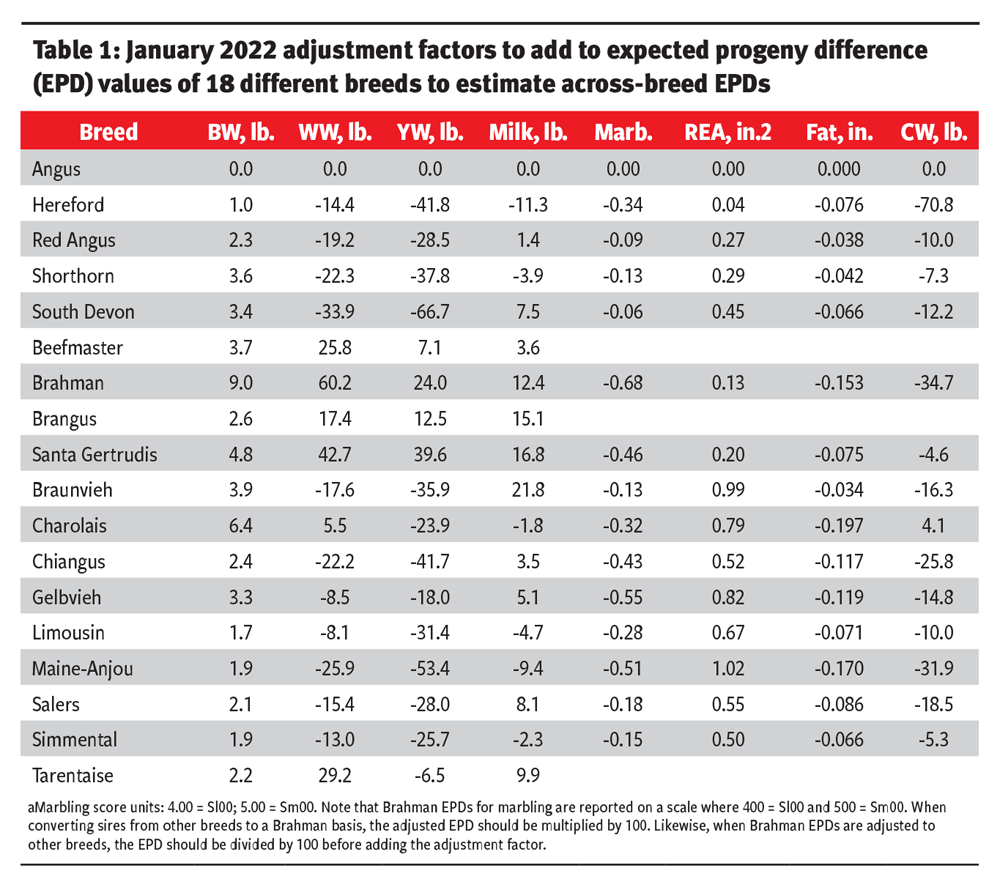

Angus Proud
In this Angus Proud series, Editorial Intern Jessica Wesson provides insights into how producers across the country use Angus genetics in their respective environments.
 Angus Proud: Scott Sproul
Angus Proud: Scott Sproul
Oklahoma operation learned wisdom of moving calving season to better suit their marketing needs.
 Angus Proud: Bubba Crosby
Angus Proud: Bubba Crosby
Fall-calving Georgia herd uses quality and co-ops to market calves.
 Angus Proud: Jim Moore
Angus Proud: Jim Moore
Arkansas operation retains ownership through feeding and values carcass data.
 Angus Proud: Les Shaw
Angus Proud: Les Shaw
South Dakota operation manages winter with preparation and bull selection.
 Angus Proud: Jeremy Stevens
Angus Proud: Jeremy Stevens
Nebraska operation is self-sufficient for feedstuffs despite sandy soil.

